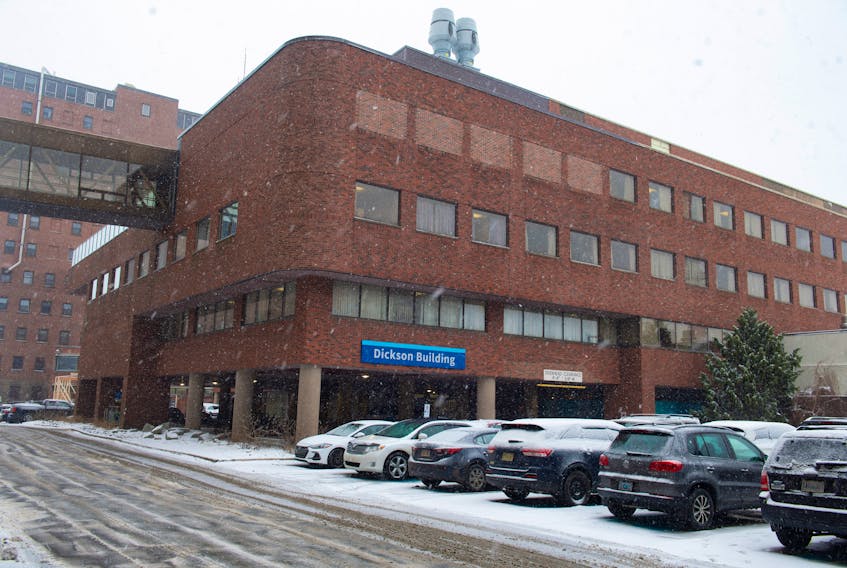The recent controversy about the proposed QEII parkade is a symptom of a potentially far deeper problem.
Despite the congratulations, handshakes and smiling faces of municipal and provincial politicians over the clever compromise to move the monstrosity several metres to the west and to narrow Summer Street — a shell game — there has been no response to many questions asked by former CEO Dr. Bernard Badley, architect John Crace and others.
If the Commons-compromising structure was deemed a good idea, how many other ill-conceived “good ideas” are embedded in the $2-billion project?
There is an alleged urgency to vacate the current VG site due to increasing maintenance problems. There is also a political urgency to demonstrate positive (appearing) action — new hospitals play well politically. We have no idea how much creativity, innovation and questioning of basic principles went into the planning. Considering the very conservative engineering, architect, clinician and administrative groups, I suspect most thinking was time-limited, “in the box,” minimal risk — “This is what we have done in the past.”
Are we merely getting a complicated engineering project for $2 billion, or should we be reaching for a bold, comprehensive rethink of health and disease care for Nova Scotians? Why not use this as a launch for a total reset on what health care means?
Considering the environmental impact of the project, can we maintain as many currently standing structures as possible instead of knocking down and trucking away uncountable tonnes of material? That includes leaving the very functional cancer treatment centre at the VG site and the current parking off Robie Street. Several of us have already suggested multiple parking areas in less-congested areas outside the downtown core and shuttle buses for staff (many of whom shift-change at the same time) and for patients attending clinic appointments or testing. Start using far more virtual care to reduce out-of-town visits. Those are quick fixes that could help to reduce the project's footprint.
For longer-term transformative health improvement and decreased demand for disease care, knowing that poverty is the No. 1 determinant of health, redirect some of the budget to a universal basic income. Also, provide school breakfast and lunch programs, teach whole families about healthy food preparation (get local farmers involved), develop micro-gardens in urban areas and enable regular physical activity for children and adults.
A large proportion of our population does not know what health is or feels like. Let’s provide the necessary competencies for lifelong avoidance of disease and injury, where possible.
In a 2013 study comparing 16 peer OECD country poverty rates, further broken down by provinces, Nova Scotia and P.E.I. ranked last in Canada and at the bottom with Japan and the U.S. Do we funnel more money to insatiable acute care, or can we address the horror of poverty and illness in our relatively rich province?
A huge opportunity to innovate and redesign the Nova Scotia health- and disease-care system was missed when the NSHA was created almost five years ago. There could have been a focus on health and productivity, local community-based priority-setting and programs, sharing of best practices, creation of centres of expertise, networking of care centres, adoption of virtual care and evaluating outcomes.
A wide mix of functional collaborative health-care teams, depending on local health professions’ availabilities, might be in place. Health-care professionals might have been more easily attracted, from outside the province as well as trainees from here, to an innovative Nova Scotia. Instead, a time-limited arbitrary start date was selected, leaving no time for imagination. Politicians and hospital administrators moved from the Annapolis Valley Health Authority to Halifax, demanded central control, and used essentially the same worn-out playbook from the last 30 years.
The results speak for themselves.
The parkade fiasco is an opportunity to stop and question the foundation of the whole project. What are we getting for $2 billion? Just bricks, mortar, and more of the same insatiable, reactive acute care? Or can that money buy some imagination and start getting at the root of the causes of disease in our society?
I will be told, of course, that it is too late — the project must proceed, on schedule. Many in the public will cry, “We need our hospitals! Stop complaining!” The timelines are arbitrary man-made dates. They can be changed.
Does anyone else care about this? This is public money — as a taxpayer in this province, are you satisfied with this proposed investment?
Dr. John Ross lives in Halifax









